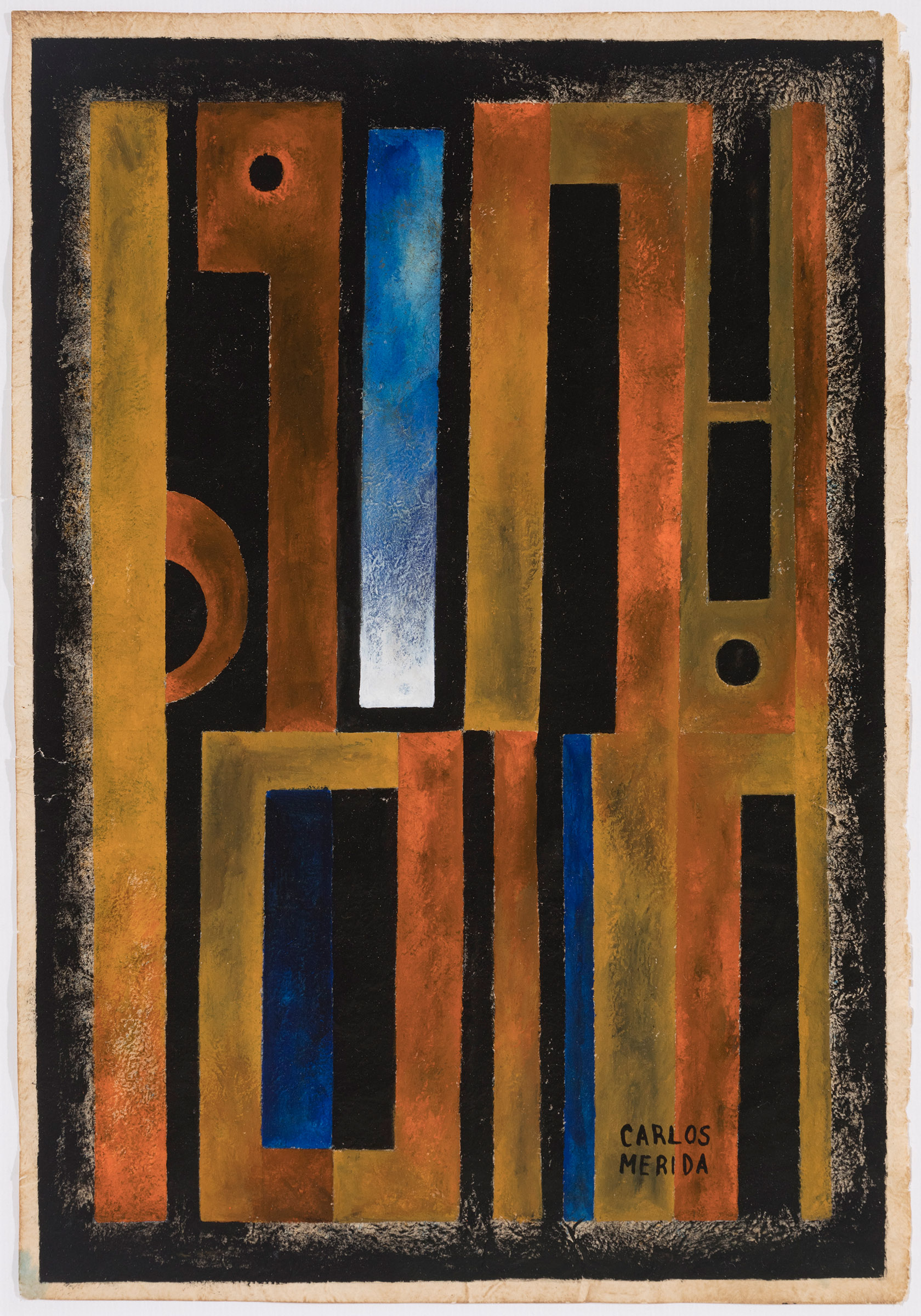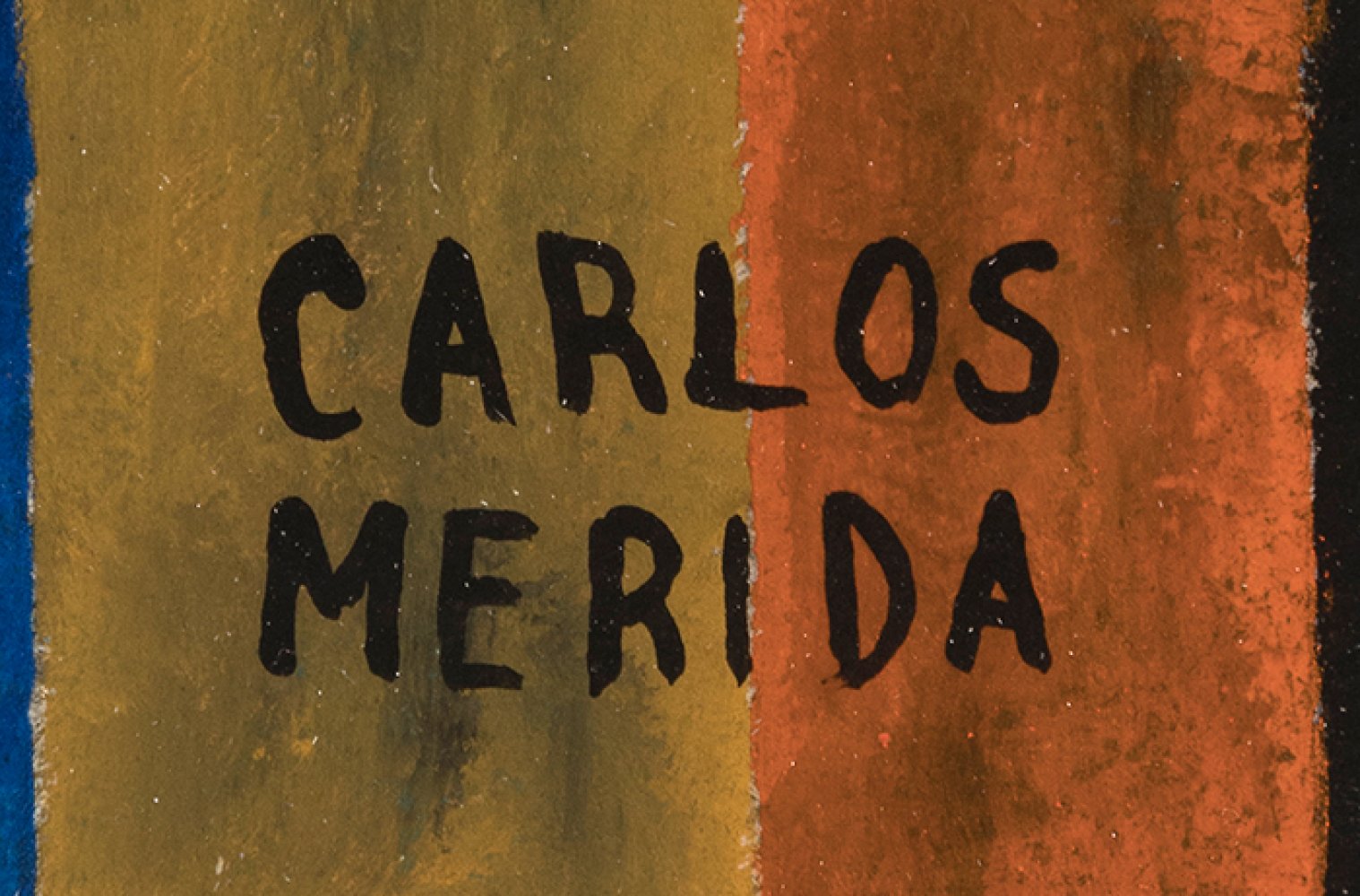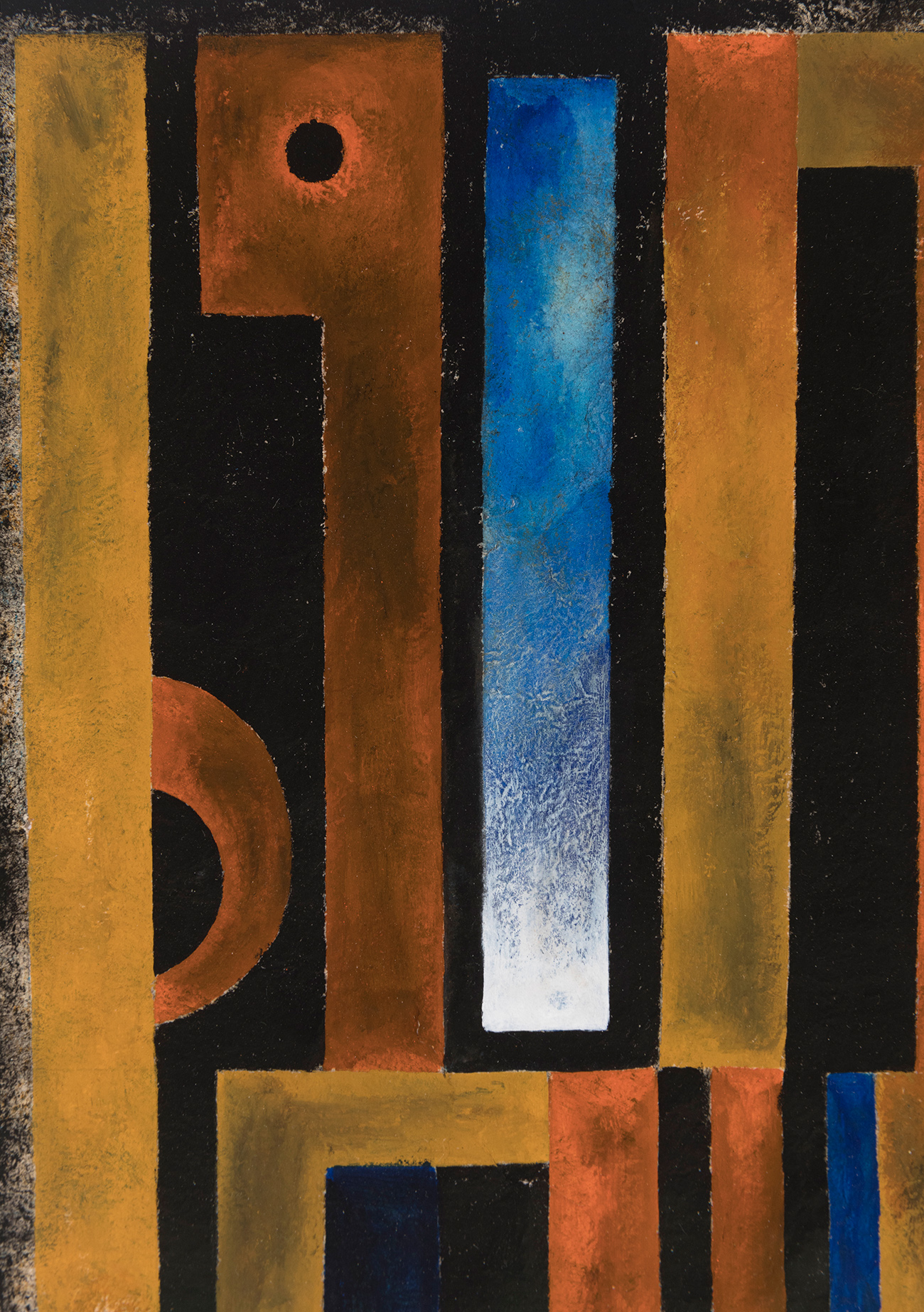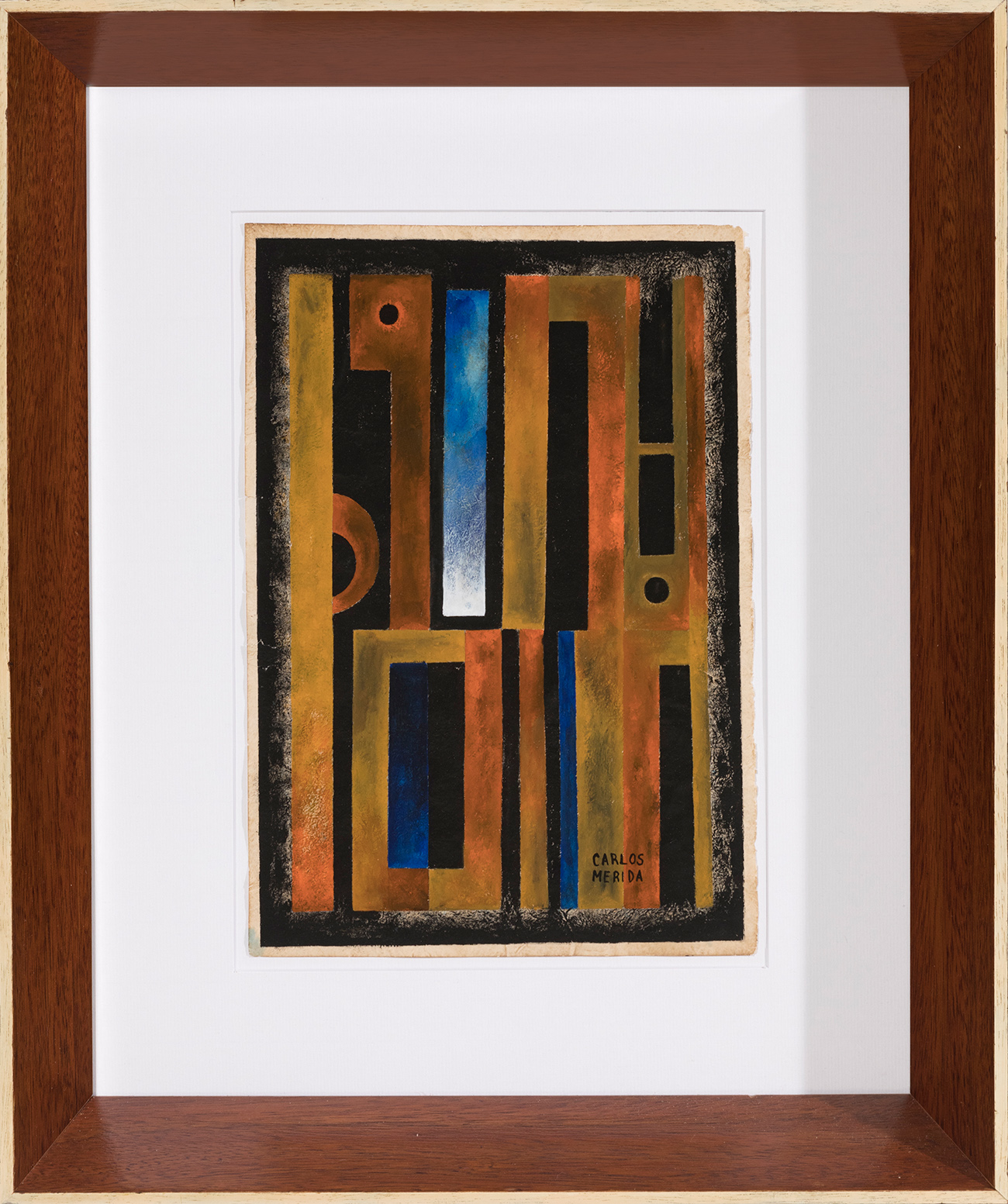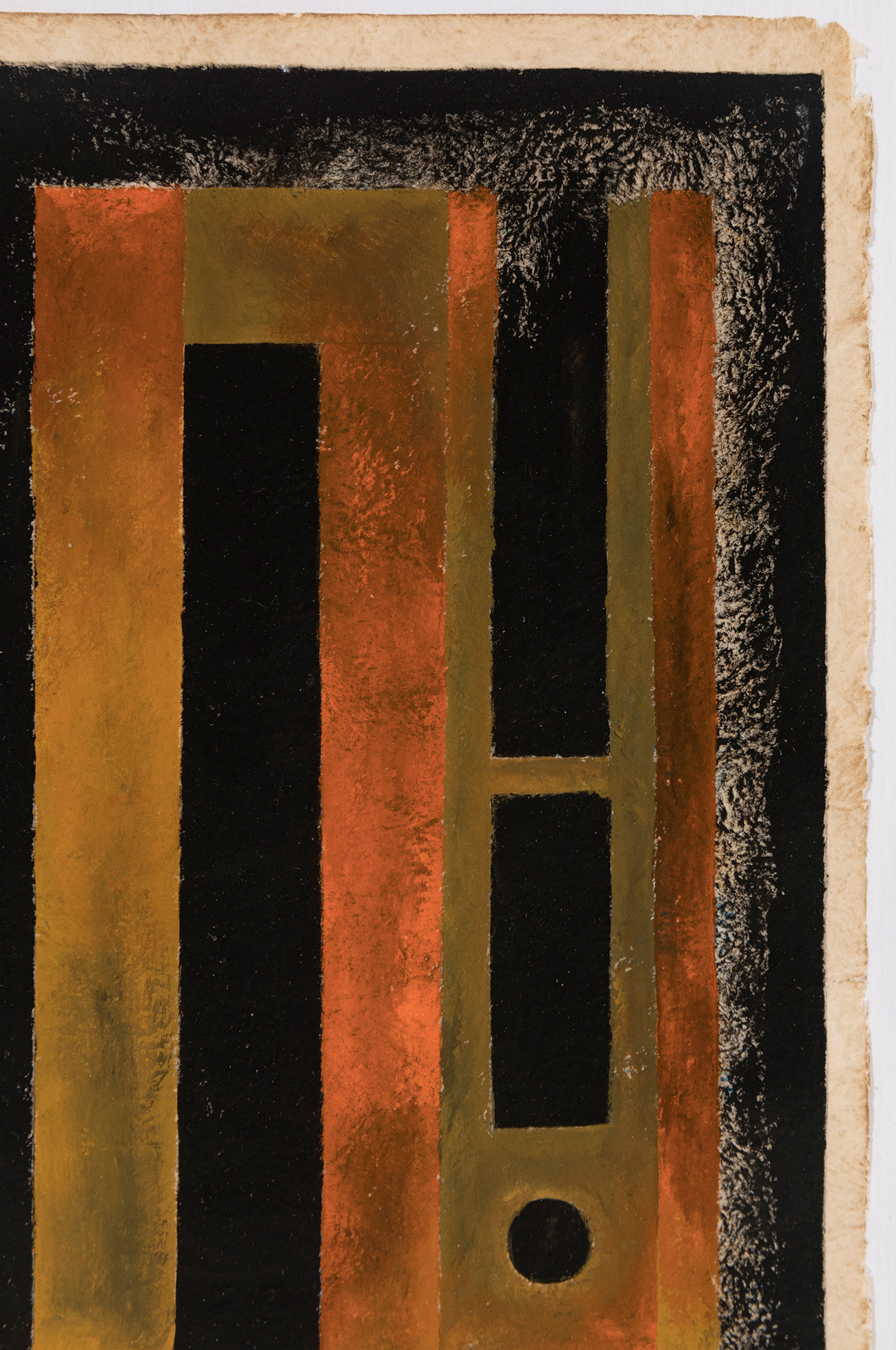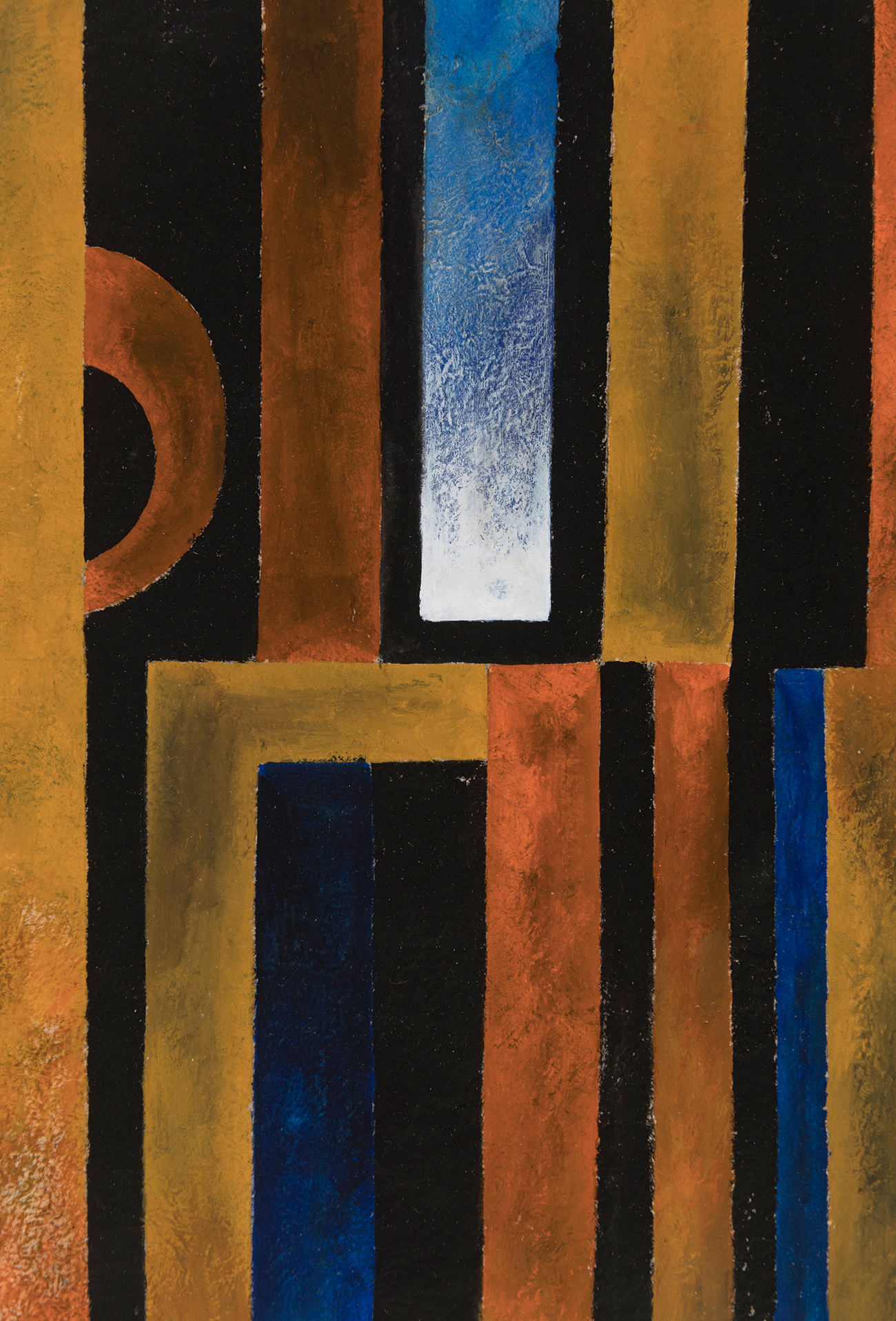54
CARLOS MÉRIDA (Guatemala, 1891 - Mexico City, 1984).Untitled.Gouache on paper.Signed in the lower
Untitled.
Gouache on paper.
Signed in the lower right corner.
Size: 32,5 x 22,5 cm; 52 x 43,5 cm (frame).
In this piece we can observe a post-cubist style, where the artist has dissipated and synthesised the forms, creating a composition in which different elements treated from different perspectives form a harmonious whole. However, in this piece colour plays a fundamental and leading role. Using a chromatic palette where the colours oscillate between warm and cold tones.
Mérida's artistic career began when he was still a teenager. After returning to Guatemala City with his family, he came into contact with various artists and intellectuals. At the age of nineteen, he became close to the Catalan artist and writer Jaime Sabartés, who helped Mérida organise his first solo exhibition at the offices of the newspaper El Economista in Guatemala City in 1910. As there were few opportunities for artists in Guatemala, in 1910, Mérida travelled to Paris with a friend named Carlos Valenti on a German freighter. From then until 1914, he lived and worked in Paris and travelled through much of Europe. This brought him into contact with European avant-garde artists such as Van Dagen, Amedeo Modigliani, Pablo Picasso and Piet Mondrian, as well as with Latin American artists studying in Europe such as Diego Rivera, Jorge Enciso, Ángel Zárraga and Dr. Atl. He exhibited his work in venues such as the Salon Indépendant and the Galerie Giroux in Paris. For unknown reasons, his travelling companion committed suicide in his studio, which deeply and temporarily affected Mérida's interest in art. Roberto Montenegro helped him to overcome it. In 1914, Mérida returned to Guatemala, becoming fascinated with folklore. His second exhibition in Guatemala was at the Rosenthal Building in 1915, an exhibition that marked the beginning of modern painting in Guatemala . His time with Mexican artists in Europe prompted him to go to Mexico in 1919, when the fighting of the Mexican Revolution was over but there was still disorder. He arrived in the country a year before Diego Rivera returned from Europe, making contact with the muralists of the area. Mérida was noted for his easel works and for his mural painting. His first exhibition in Mexico was in 1920 at the Escuela Nacional de Bellas Artes. That same year he exhibited in the United States at the Hispanic Society of New York. He participated in a group show called the Exhibition of Independent Artists in New York in 1922 and had solo exhibitions at the National Academy of Fine Arts in Guatemala and the Valentin Dudesing Gallery in New York in 1926. In the 1930s and 1940s, the reputation of Mexican painting was on the rise; however, Mérida still needed to work to sell his paintings. One reason for this was that his work differed from that of the Mexican muralists and was often not well received by critics. Mérida had forty-five exhibitions in the United States and eighteen in Mexico from 1928 to 1948. These included an exhibition with Rufino Tamayo at the Art Center in New York (1930), the John Becker and Valentine Galleries in New York (1930), the Mexican Writers Club and Posada Gallery in Mexico City (1931), the Stedhal Gallery and Stanley Rose Gallery in Los Angeles, the East West Gallery in San Francisco, the Palacio de Bellas Artes and the Georgette Passedoit and Cuchnitz Galleries in New York (1939-1940) as well as the 1940 International Surrealist Exhibition in Mexico City. He worked intensively in the 1950s, 1960s and 1970s producing designs, graphic works, stage sketches for dance and tapestries, playing with geometric variants. Other venues for his exhibitions included Harvard University, Berkeley Art Museum, etc.
Untitled.
Gouache on paper.
Signed in the lower right corner.
Size: 32,5 x 22,5 cm; 52 x 43,5 cm (frame).
In this piece we can observe a post-cubist style, where the artist has dissipated and synthesised the forms, creating a composition in which different elements treated from different perspectives form a harmonious whole. However, in this piece colour plays a fundamental and leading role. Using a chromatic palette where the colours oscillate between warm and cold tones.
Mérida's artistic career began when he was still a teenager. After returning to Guatemala City with his family, he came into contact with various artists and intellectuals. At the age of nineteen, he became close to the Catalan artist and writer Jaime Sabartés, who helped Mérida organise his first solo exhibition at the offices of the newspaper El Economista in Guatemala City in 1910. As there were few opportunities for artists in Guatemala, in 1910, Mérida travelled to Paris with a friend named Carlos Valenti on a German freighter. From then until 1914, he lived and worked in Paris and travelled through much of Europe. This brought him into contact with European avant-garde artists such as Van Dagen, Amedeo Modigliani, Pablo Picasso and Piet Mondrian, as well as with Latin American artists studying in Europe such as Diego Rivera, Jorge Enciso, Ángel Zárraga and Dr. Atl. He exhibited his work in venues such as the Salon Indépendant and the Galerie Giroux in Paris. For unknown reasons, his travelling companion committed suicide in his studio, which deeply and temporarily affected Mérida's interest in art. Roberto Montenegro helped him to overcome it. In 1914, Mérida returned to Guatemala, becoming fascinated with folklore. His second exhibition in Guatemala was at the Rosenthal Building in 1915, an exhibition that marked the beginning of modern painting in Guatemala . His time with Mexican artists in Europe prompted him to go to Mexico in 1919, when the fighting of the Mexican Revolution was over but there was still disorder. He arrived in the country a year before Diego Rivera returned from Europe, making contact with the muralists of the area. Mérida was noted for his easel works and for his mural painting. His first exhibition in Mexico was in 1920 at the Escuela Nacional de Bellas Artes. That same year he exhibited in the United States at the Hispanic Society of New York. He participated in a group show called the Exhibition of Independent Artists in New York in 1922 and had solo exhibitions at the National Academy of Fine Arts in Guatemala and the Valentin Dudesing Gallery in New York in 1926. In the 1930s and 1940s, the reputation of Mexican painting was on the rise; however, Mérida still needed to work to sell his paintings. One reason for this was that his work differed from that of the Mexican muralists and was often not well received by critics. Mérida had forty-five exhibitions in the United States and eighteen in Mexico from 1928 to 1948. These included an exhibition with Rufino Tamayo at the Art Center in New York (1930), the John Becker and Valentine Galleries in New York (1930), the Mexican Writers Club and Posada Gallery in Mexico City (1931), the Stedhal Gallery and Stanley Rose Gallery in Los Angeles, the East West Gallery in San Francisco, the Palacio de Bellas Artes and the Georgette Passedoit and Cuchnitz Galleries in New York (1939-1940) as well as the 1940 International Surrealist Exhibition in Mexico City. He worked intensively in the 1950s, 1960s and 1970s producing designs, graphic works, stage sketches for dance and tapestries, playing with geometric variants. Other venues for his exhibitions included Harvard University, Berkeley Art Museum, etc.
8th November - 19th & 20th Century Arts
Sale Date(s)
Venue Address
General delivery information available from the auctioneer
Setdart offers Worldwide shipping
PICK UP IN ROOM: You can come and pick up your lots in our offices (Barcelona, Madrid or Valencia). At the moment of the withdrawal, you will be able to accept the current conditions of the lot by means of a document that you will sign.
YOU CAN SEND ANOTHER PERSON TO PICK UP: This person must present a signed authorization that you can find in our web page by accessing from BUY AT SETDART- LOGISTICS-DOWNLOAD AUTHORIZATION DOCUMENT. You can also send an e-mail with the requested data in AUTHORIZATION DOCUMENT to admin@setdart.com
Important Information
25% buyer´s premium
OR
21% buyer´s premium at www.setdart.com
Terms & Conditions
The maximum period to pay the lots is 7 working days. You can pay either via bank transfer or with credit card through our platform www.setdart.com (we only accept VISA or Mastercard).
BUYER´S PREMIUM: 22% Hammer price + 21% VAT from the buyer´s premium
If your piece has more than 100 years, our Ministry of Culture requires an export certificate in order for the piece to leave the country. Note that if the piece goes inside the EU, there is no cost for the export certificate. If the piece goes outside the EU, there is a cost for the export certificate. You can find more information in our Ministry of Culture website: https://www.culturaydeporte.gob.es/en/cultura/patrimonio/exportacionimportacion/exportacion/tasas.html
INQUIRIES: admin@setdart.com
Setdart guides you through the entire process, from the time of award to the day you receive your lot. Our logistics team will be happy to manage your transport, and will advise you on the best shipping method with professionals from the sector used to handling works of art and jewelry.
WE OFFER WORLDWIDE DOOR TO DOOR SHIPPING
PICK UP IN ROOM: You can come and pick up your lots in our offices. At the moment of the withdrawal, you will be able to accept the current conditions of the lot by means of a document that you will sign.
YOU CAN SEND ANOTHER PERSON TO PICK UP: This person must present a signed authorization that you can find in our web page by accessing from BUY AT SETDART-LOGISTICS-DOWNLOAD AUTHORIZATION DOCUMENT. You can also send an e-mail with the requested data in AUTHORIZATION DOCUMENT to admin@setdart.com
SETDART IS NOT RESPONSIBLE FOR THE STATE OF THE PARTS ONCE THEY LEAVE OUR FACILITIES. MRW SHIPMENTS: Once the payment is made, your lot will be packed for shipment, the logistics department will send you an e-mail notifying you of the day it leaves our warehouse, changes of address cannot be made after receiving this e-mail.
INSURANCE INCIDENTS: Coverage for the value of the auction up to 3000 ? per shipment, if the value of the auction is higher, Setdart will send you a quote including the additional insurance. The insurance company WILL NOT BE RESPONSIBLE FOR THE SHIPMENT THAT EXCEEDS THAT AMOUNT AND IS NOT FULLY INSURED. MRW INCIDENTS: Maximum notification 48 hours after receipt, after which the insurance company WILL NOT BE RESPONSIBLE AND NO CLAIMS WILL BE ACCEPTED.
E-MAIL LOGISTICS: logistica@setdart.com
PICK UP YOUR MESSAGES: You can send your own messaging, prior notice via e-mail that your shipment is ready, please note 3 or 4 days in advance. This type of shipment is packaged so Setdart will provide you with a quote.
EXPENSES FOR STORAGE: We inform you that if the purchased lot is not picked up within a month, you will be charged 30€ per week per lot. Setdart Online S.L., owner of the web site "setdart.com", "setdart.net" and "setdart.org", acts as a company of Spanish nationality inscribed in the Volume 36955, sheet 182, page B-293056 of the Mercantile Registry, with registered office at Calle Aragó













